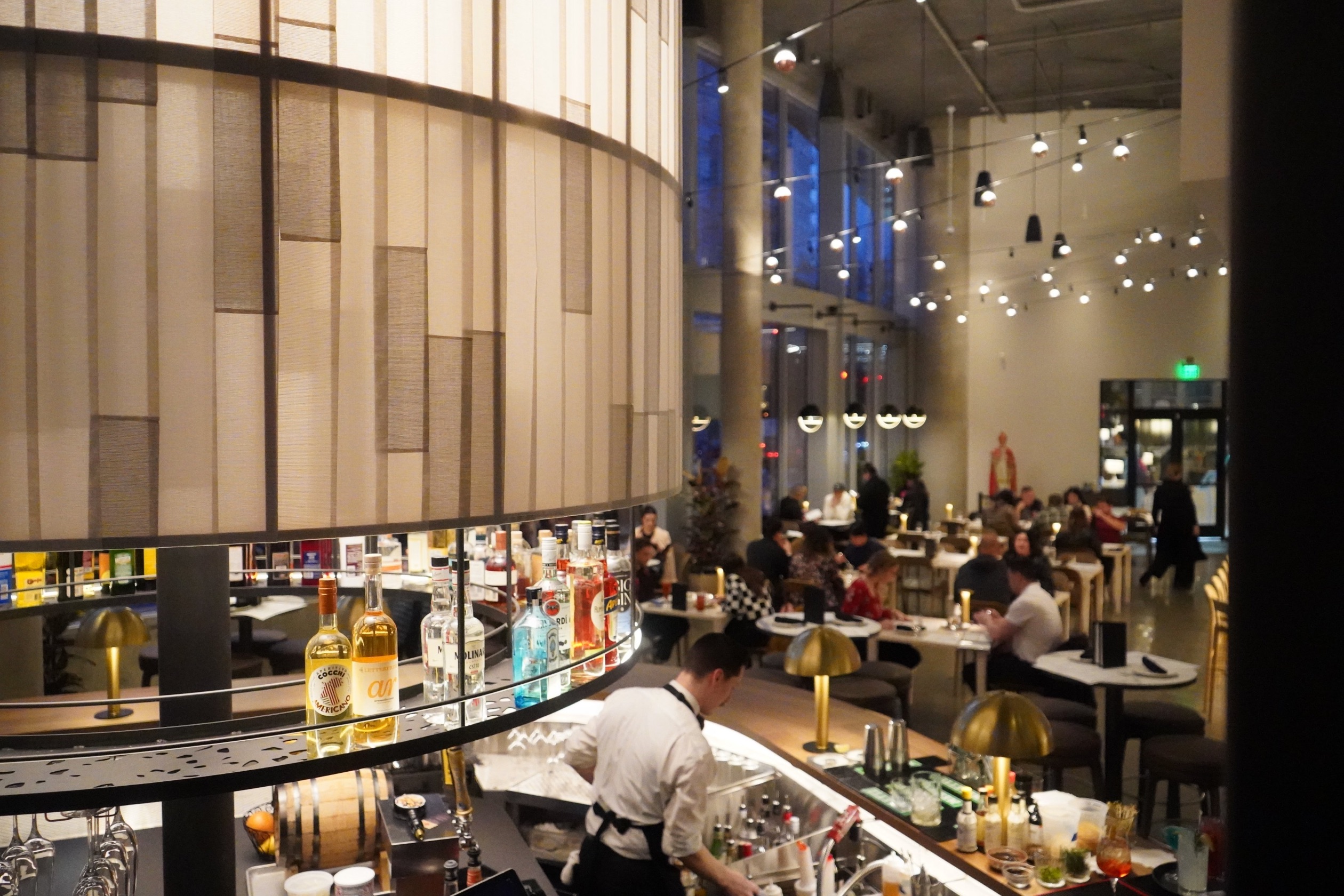This is the story of a little bean that came from Italy more than 70 years ago. It was called the monachine, or “little nuns” in Italian, because of its distinctive white cap.
The taste and texture of this bean are said to be unparalleled. It can be eaten either fresh or dried. Fresh, it’s a delicious and stringless yellow-green bean. When dried, its small, round bi-colored orbs have a creamy, earthy taste.
The little bean’s journey to Washington state was many years in the making. In the mid-1900s, a handful of these beans traveled to California and into the hands of vintner Robert Mondavi. They were a gift from his uncle in Italy.
In the 1950s, Mondavi gave a few of these beans to his friend Angelo Pellegrini to plant in his 1,500-square-foot garden in Seattle. A culinary icon in the Northwest, Pellegrini is one of America’s most beloved writers on the pleasures of food, wine and community. He was famous for his bountiful home garden filled with all types of vegetables, herbs and berries. It was so lush that Sunset magazine sent a photographer to visually record it, season by season, over the course of a year.

For more than 40 years, Pellegrini carefully cultivated, propagated and enjoyed these little beans. His careful attention, season after season, enabled them to become perfectly adapted to the growing conditions and climate of the Pacific Northwest.
As Pellegrini neared the end of his life – he died in 1991 — his son Brent helped him keep up the family garden. After both his parents died, Brent transplanted some of his father’s prized seeds, including the monachine, to his own home garden.
In the fall of 2008, Brent gave 11 of the monachine plants to The Herbfarm, an upscale restaurant in Woodinville, Wash., which sources most of its produce from its own five-acre culinary garden. The next year, The Herbfarm had gathered enough bean starts to grow them around two beanpole “teepees.” At the end of that first season, about 90 percent of the harvest was saved to plant the following year. In this manner, by 2012 the harvest had expanded to 64 tepees that supported about 1,000 plants.
Being able to trace a “family lineage” is the very definition of an heirloom vegetable — an old-time variety that is saved and handed down through multiple generations of families. Thanks to Pellegrini’s careful nurturing and passion for this heirloom bean, the monachine is now popularly known as the Pellegrini bean.
To test the genetics of the Pellegrini bean, Northwest food pioneer and sustainable agriculture promoter Mark Musick once sent a sample to the Organic Seed Alliance for analysis. The lab reported back that they had nothing to compare them to. The beans embodied their own distinct heritage.
In Lean Years, Happy Years, one of his books about food, wine and the immigrant experience, Pellegrini wrote at length about the benefits of growing one’s own food. He insisted that no special talent or competence was needed to produce a successful kitchen garden, and he encouraged his readers to roll up their sleeves, pick up a hoe or shovel, and dig in.
Pellegrini’s simple, down-to-earth approach was the stuff of legends. Once when he was asked for his secret for making good wine, he answered that there is no recipe. Simply crush a ton of grapes into an appropriate container and wait for nature to do the rest.
As Americans embraced fast food in the mid-twentieth century, Pellegrini moved in the opposite direction, promoting local healthy ingredients, picked and eaten at the peak of ripeness, unadorned and uncomplicated. Well-known food author Ruth Reichl once dubbed him a slow-food voice in a fast-food nation.
Pellegrini was years ahead of his time, at least as far as middle America was concerned. “The cuisine may be generally regarded as a part of a people’s culture,” he wrote in “The Unprejudiced Palate,” regarded today as a culinary classic. “The quality of the fare, the manner in which it is prepared, the time devoted to its ingestion, the conventions of the dinner table: these are intimately related to, and frequently reflect, a people’s esthetic development.”
As Pellegrini pointed out so eloquently, there is an intrinsic link between what we eat and where we come from. Food expert Musick agreed, writing in theSeattle Times, “The existence of the monachine is not just plant genetics, it’s cultural genetics. It connects us back to Angelo Pellegrini, who connects us to Robert Mondavi, who connects us back to villages in Italy. All that is embodied in those seeds.”
In his later years, Pellegrini was named an outstanding citizen of Washington by the state House of Representatives, recognized by the Daughters of the American Revolution, and honored by the Freedom Foundation for creating a better understanding of the American way of life. In 2001, he was posthumously named one of the 150 most influential men and women in the 150-year history of Seattle and King County.
The monachine bean was reported to be a particular favorite of Pellegrini’s. He savored them slowly, bean by bean, mashing each one with his fork and swiping it through a dab of olive oil before popping it into his mouth. It was a special occasion worth waiting for each growing season.





























